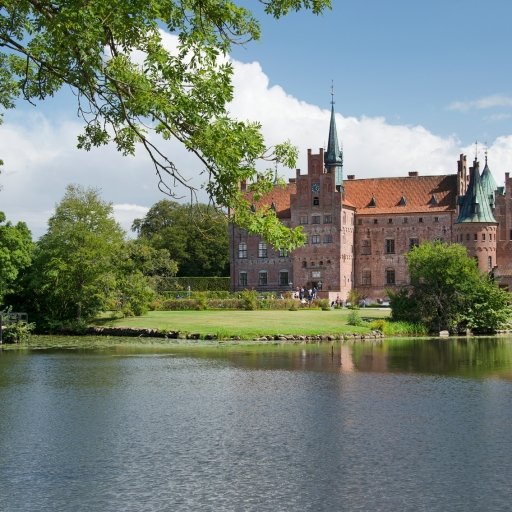Weather in Denmark
Denmark has a milder climate than the other Nordic countries. The danish climate is moderated because of the warm Gulf Stream.
The coldest month in Denmark is February and the warmest month is August. The best time to visit Denmark is from March to late October, but it is possible to visit all year - just to remember a warm coat in the winter.
See also: The best time to visit Denmark
Temperatures in Sea
Denmark is surrounded by a long coastline (7314 km), and here you find many beautiful beaches where you can swim in the summer from June to August, and in August, the average temperature can reach 15 C (60F).
Denmark has four seasons; below, you can see how the weather changes during the year.
Danish Spring (March-May)
Springtime in Denmark is beautiful, but can also be windy and fresh, with a temperature range of 5°C up to around 18°C. The months of April and May are amazing when all the trees get new leaves and the flowers begin to blossom. Spring in Denmark can be very shifty, so you will need some warmer clothes, especially if you arrive in March. In the spring, you can also wear shorts, and the days get longer and longer every day. At the end of May, the sun goes down around 9.30 pm, and you will also find the most sunny days. May is an exceptionally charming month, as spring is at its height.
Danish Summer (June - August)
The Summer months of June, July, and August are the hottest, and it is here most tourist visit Denmark. Typical daytime temperatures in the midsummer are a little more than 20 °C, but you may be surprised at how warm the weather in Denmark can be in the summer, with temperatures up to 28°C.
Daylight is in the summer like in the rest of the northern countries, and Danish summer evenings can be hot, cosy and nice, and a beautiful time to visit one of Denmark`s beaches on the long coastline. So it is easy to find a beach where you can be alone. If the beach has a Blue flag, you can be sure that the water is clean and safe.
It is also perfect in the summer to hire a bike and take one of Denmark`s many cycle routes. There are 12,000 km of them, and safe cycle paths are found all over Denmark. If you need a break, you can also take the bike with you on the train.
Danish Autumn (September - November)
The weather can be quite windy here, but it is also the months when the trees change colours in the countryside, turning orange, gold, and red. The temperatures are dropping, with averages in September around 18°C and as low as 5°C by the end of November.
From December to March, winter usually is cold, and sometimes there is frost and snow.
Danish Winter (December - March)
The weather here can be cold, with temperatures around freezing to 10° C and almost every year, it snows.

Season & Events in Denmark
|
Season |
Period |
Weather |
Events |
|---|---|---|---|
|
Spring |
March to May |
Mild temperatures, blooming |
Copenhagen Marathon, Tivoli Gardens |
|
Summer |
June to August |
Warm temperatures, longer days |
Roskilde Festival, Midsummer festivals |
|
Autumn |
September to November |
Mild temperatures, foliage |
Copenhagen Jazz Festival, Tønder Festival |
|
Winter |
December to February |
Cold temperatures, possibly snow |
Christmas markets, Northern Lights tours |









